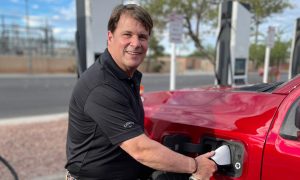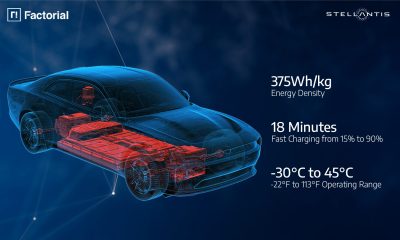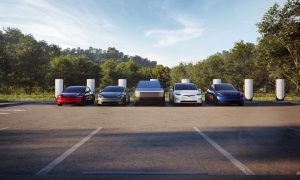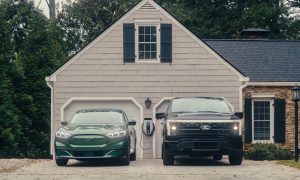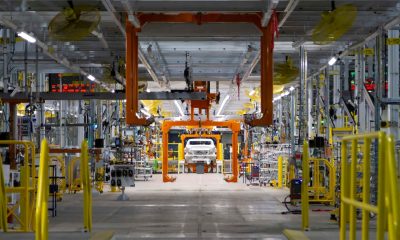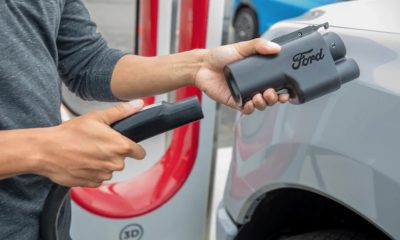Despite making some progress in contract negotiations with the United Auto Workers (UAW) union, Ford says there are still some major gaps to address before an agreement is reached. The statement comes after Ford avoided escalated strikes by meeting some UAW demands last week, just as parts workers walked out of 38 Stellantis and General Motors (GM) distribution centers on Friday.
Ford said on Sunday that there were still “significant gaps to close” in contract negotiations with the UAW, according to a report from Reuters. The UAW said it made “some real progress at Ford” over the weekend, although it added that the two parties still had serious issues to work through.
On Sunday evening, Ford said the related “issues are interconnected and must work within an overall agreement that supports our mutual success.”
At the time of writing, the UAW has not yet commented on the statement from Ford. The news also comes ahead of U.S. President Joe Biden’s plans to visit Michigan in support of the strikes on Tuesday.
Ford also said that it would be pausing construction on a $3.5 billion battery manufacturing plant in Michigan, as detailed in a Monday afternoon report from Reuters.
“We are pausing work and limiting spending on construction on the Marshall project until we’re confident about our ability to competitively operate the plant,” Ford said. “We haven’t made any final decision about the planned investment there.”
The Detroit automakers have offered contracts with 20-percent raises over the next four and a half years, though the UAW is reportedly still asking for 40-percent wage hikes over a four-year period, in addition to 32-hour work weeks. The union is also demanding the restoration of defined pension benefits and an end to a tiered wage system that requires a certain amount of time to reach top wages.
Workers at an additional 20 Stellantis and 18 GM parts distribution centers walked off the job on Friday due to a lack of progress in UAW contract negotiations. The walkouts are straining other Stellantis and GM manufacturing facilities, rendering them unable to receive the necessary parts to continue production. The expanded strikes totaled around 5,600 workers, joining the initial wave of 12,700 workers who walked out a week prior.
The UAW represents roughly 150,000 workers total, and this is the first time in history that the union has lodged strikes against all three of the Michigan automakers simultaneously.
“Like the rest of us all, all we’re asking is to not have to struggle. Just wanting enough money to pay my bills, buy groceries, and have enough for extras like taking my kid to the jump park.”– Samantha Richter, a worker at Ford Michigan Assembly Plant https://t.co/pCgxP36QWo
— UAW (@UAW) September 25, 2023
Last week, GM said it was forced to lay off around 2,000 workers at a Fairfax, Kansas plant, citing a lack of available work due to the UAW strikes. The automaker went on to call the UAW demands “untenable,” adding that it wouldn’t be able to offer unemployment for the laid-off employees.
As the Detroit Free Press reports, one auto supplier in Wixom, Michigan also announced plans to lay off 230 workers on Monday. The figure represents 75 percent of employees at Eagle Industries, Inc., which makes a material used in car door components along with other non-automotive products. While the company hasn’t explicitly disclosed its clients, a separate analysis noted that its product had been used in Ford’s vehicles.
“As a result of unforeseen business circumstances, we are providing information in anticipation of a potential layoff at the worksite,” wrote the company in a note to the state of Michigan. “The estimated number of workers is subject to change due to evolving business circumstances.”
Some predict that the ongoing strikes will likely result in higher vehicle prices due to increased costs for parts. Another analysis from the University of Michigan noted that as many as 150,000 workers could be subject to layoffs if the strikes last an entire month, highlighting the situation’s far-reaching effects until the parties can finalize a deal.
“These growing spillover effects across the automotive supply chain produce successively larger spillovers to the broader economy, as well,” states the analysis, “as laid-off workers in the supply chain lose purchasing power and cut back on spending in other parts of the economy.”
Update: Updated to include the Monday afternoon report from Reuters, in which Ford said it was pausing construction on a Michigan battery plant.
What are your thoughts? Let me know at zach@teslarati.com, find me on X at @zacharyvisconti, or send your tips to us at tips@teslarati.com.
News
Tesla opens massive solar Supercharger station in California
The Supercharger opened to customers ahead of Fourth of July weekend, while Tesla continues phase two of construction on the site.

Tesla has officially launched the first several Supercharging posts at a massive station in California, notably including solar canopies and grid-scale batteries to offer completely renewable charging.
Last week, Tesla announced on X that it opened the first 84 Supercharger stalls of a planned 168-stall station in Lost Hills, California. Additionally, the massive Supercharger project features 11MW of solar canopies and 10 Megapack batteries for off-grid charging powered entirely by solar energy.
Tesla completed the first phase of the project just days ahead of the busy Fourth of July holiday weekend, adding that initial construction took just eight months. In addition to the remaining charging stalls, Tesla says it’s building a set of lounge areas, renderings of which can be seen below alongside current photos of the site.
Notably, the site also includes V4 charging posts for the company’s latest available charging speeds, and it’s located near the busy junction between I-5 and Highway 46 in Kern County.
“Thank you [Kern County] and [PG&E] for collaboration and approvals,” Tesla wrote in a follow-up post.

Credit: Tesla Charging | X

Credit: Tesla Charging | X

Credit: Tesla Charging | X

Credit: Tesla Charging | X
Tesla Supercharger Maps for North America, Europe, and Asia pic.twitter.com/0U5r0XRPyo
— TESLARATI (@Teslarati) July 2, 2025
READ MORE ON TESLA SUPERCHARGERS: Tesla launches ultra-fast V4 Superchargers in China for the first time
Testing at the LA Diner, plus Musk update on potential Tesla solar Gigafactory
The huge Tesla Supercharger station completed phase one of construction fairly quickly, especially given how long Tesla has been working on its unique Los Angeles diner, drive-in, and Supercharger location. Still, the company was seen performing some testing at the nearly-completed charging station earlier this month, and will reportedly be holding a job fair.
Elon Musk also responded on Monday morning to a post on X, suggesting that Tesla is “thinking about” building a U.S.-based solar Gigafactory in order to help support increased power needs with AI growth, and to bolster domestic solar production.
Tesla is building a new UFO-inspired Supercharger in the heart of Alien country
News
Tesla driver walks away from major accident with minor injuries
The driver sustained only minor injuries, and the exact cause of the crash remains under investigation.

The driver of a Tesla Model Y survived and walked away from a harrowing accident on Monday in California, only sustaining minor injuries despite the vehicle being impaled by a guardrail.
On Monday morning around 4:34 a.m., the Los Banos division of the California Highway Patrol (CHP) responded to the accident on I-5 near Panoche Road, involving a 23-year-old in a Tesla Model Y. According to a post on social media, the driver veered off the road for unknown reasons in the northbound lane, before crashing directly into the guardrail and impaling the vehicle.
You can read the full message and photos from Los Banos CHP below, as were shared in a Facebook post on Monday afternoon.
This morning a Tesla model y was traveling in the #1 northbound lane of I-5 north of Panoche Rd. For unknown reasons driver allowed V-1 to veer off the roadway, travel through a dirt center divide, and crashed into the fixed metal guardrail. Lucky for the driver he only sustained minor injuries and was able to walk away. Driving a vehicle requires 100% attention to the road. Avoid distractions and focus on driving.

Credit: CHP Los Banos (via Facebook)

Credit: CHP Los Banos (via Facebook)

Credit: CHP Los Banos (via Facebook)
In a statement to SFGate, CHP officer Myles Anderson said that the driver only sustained minor injuries, while no arrests are made and drugs and alcohol are not suspected to have been involved. The report also notes that Tesla’s “cruise control and lane assistance features” were activated, according to Anderson. However, it’s not entirely clear if this is referring to Supervised Full Self-Driving (FSD), or to the cruise control and lane assist features baked into Autopilot.
At the time of writing, CHP has not yet responded to Teslarati’s request for clarification and additional details on the matter.
Tesla Crash Safety Ratings across its lineup: pic.twitter.com/ny30R7ceji
— TESLARATI (@Teslarati) July 1, 2025
READ MORE ON TESLA SAFETY: Tesla rolls out crucial new safety feature aimed at saving children
The news comes after Tesla has touted its vehicles as incredibly safe for many years. In December, for example, the company highlighted receiving top safety scores from regulators on four different continents throughout the world, including from the National Highway Traffic Safety Administration (NHTSA) and the Insurance Institute of Highway Safety (IIHS) in the U.S.
Tesla has also listed the goal of making its vehicles the safest on the road throughout the years, both in the overall design of its vehicles and in its Autopilot and Full Self-Driving (FSD) programs.
Tesla Model 3 ranks as the safest new car in Europe for 2025, per Euro NCAP tests
Investor's Corner
Cantor Fitzgerald maintains Tesla (TSLA) ‘Overweight’ rating amid Q2 2025 deliveries
Cantor Fitzgerald is holding firm on its bullish stance for the electric vehicle maker.
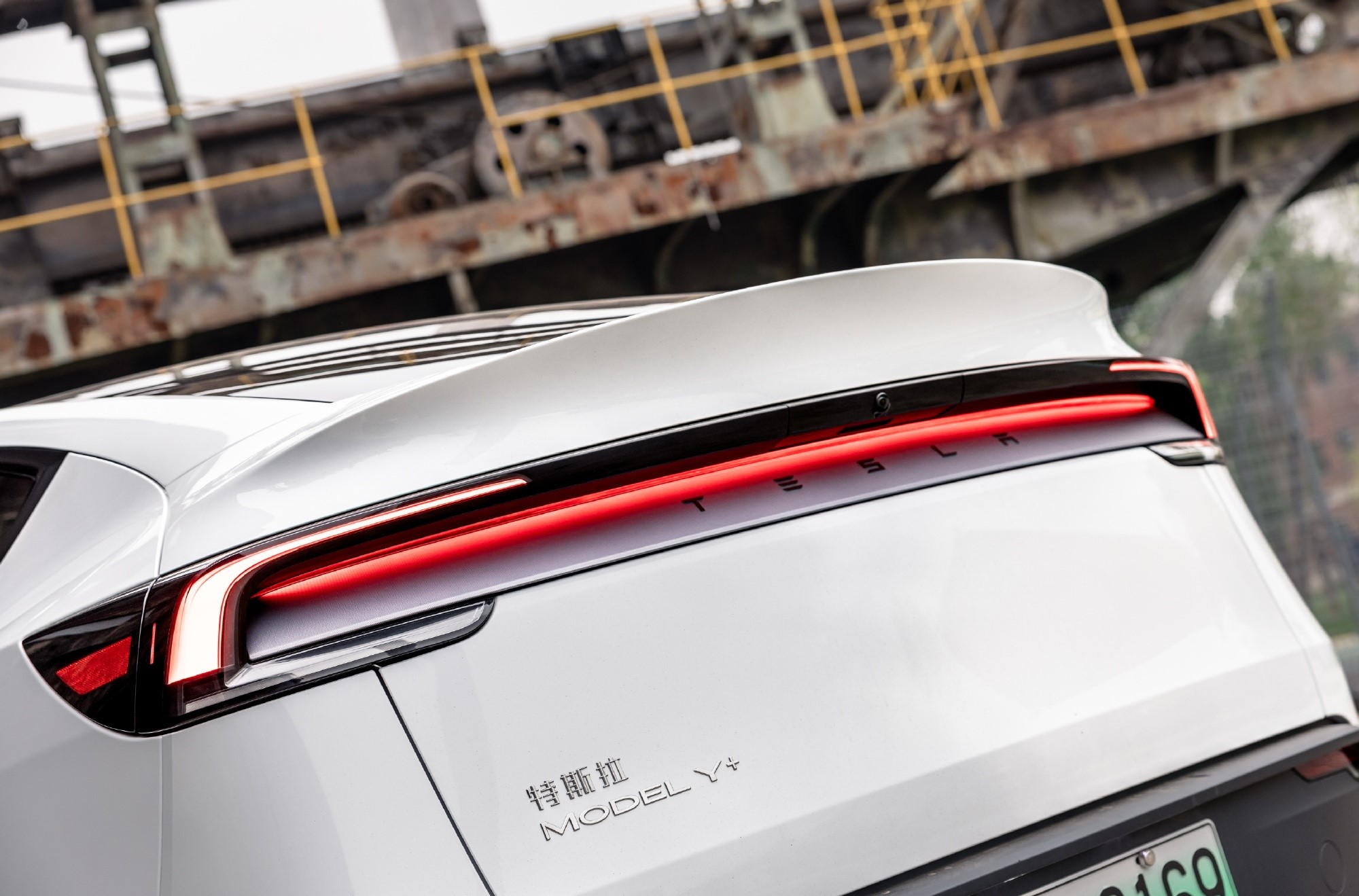
Cantor Fitzgerald is holding firm on its bullish stance for Tesla (NASDAQ: TSLA), reiterating its “Overweight” rating and $355 price target amidst the company’s release of its Q2 2025 vehicle delivery and production report.
Tesla delivered 384,122 vehicles in Q2 2025, falling below last year’s Q2 figure of 443,956 units. Despite softer demand in some countries in Europe and ongoing controversies surrounding CEO Elon Musk, the firm maintained its view that Tesla is a long-term growth story in the EV sector.
Tesla’s Q2 results
Among the 384,122 vehicles that Tesla delivered in the second quarter, 373,728 were Model 3 and Model Y. The remaining 10,394 units were attributed to the Model S, Model X, and Cybertruck. Production was largely flat year-over-year at 410,244 units.
In the energy division, Tesla deployed 9.6 GWh of energy storage in Q2, which was above last year’s 9.4 GWh. Overall, Tesla continues to hold a strong position with $95.7 billion in trailing twelve-month revenue and a 17.7% gross margin, as noted in a report from Investing.com.
Tesla’s stock is still volatile
Tesla’s market cap fell to $941 billion on Monday amid volatility that was likely caused in no small part by CEO Elon Musk’s political posts on X over the weekend. Musk has announced that he is forming the America Party to serve as a third option for voters in the United States, a decision that has earned the ire of U.S. President Donald Trump.
Despite Musk’s controversial nature, some analysts remain bullish on TSLA stock. Apart from Cantor Fitzgerald, Canaccord Genuity also reiterated its “Buy” rating on Tesla shares, with the firm highlighting the company’s positive Q2 vehicle deliveries, which exceeded its expectations by 24,000 units. Cannacord also noted that Tesla remains strong in several markets despite its year-over-year decline in deliveries.
-

 Elon Musk1 week ago
Elon Musk1 week agoTesla investors will be shocked by Jim Cramer’s latest assessment
-

 News2 weeks ago
News2 weeks agoTesla Robotaxi’s biggest challenge seems to be this one thing
-

 News2 weeks ago
News2 weeks agoWatch the first true Tesla Robotaxi intervention by safety monitor
-

 Elon Musk1 week ago
Elon Musk1 week agoA Tesla just delivered itself to a customer autonomously, Elon Musk confirms
-

 News2 weeks ago
News2 weeks agoTesla Robotaxi rollout proves that Elon Musk still delivers, even if it’s late
-

 Elon Musk2 weeks ago
Elon Musk2 weeks agoElon Musk confirms Tesla Optimus V3 already uses Grok voice AI
-

 Elon Musk2 weeks ago
Elon Musk2 weeks agoxAI welcomes Memphis pollution results, environmental groups push back
-

 Elon Musk2 weeks ago
Elon Musk2 weeks agoElon Musk commends Tesla team on successful Robotaxi launch



